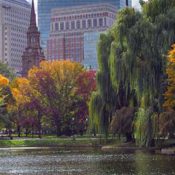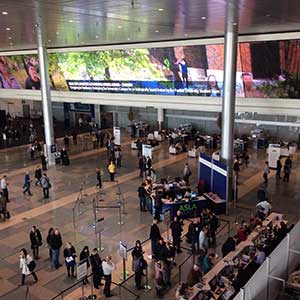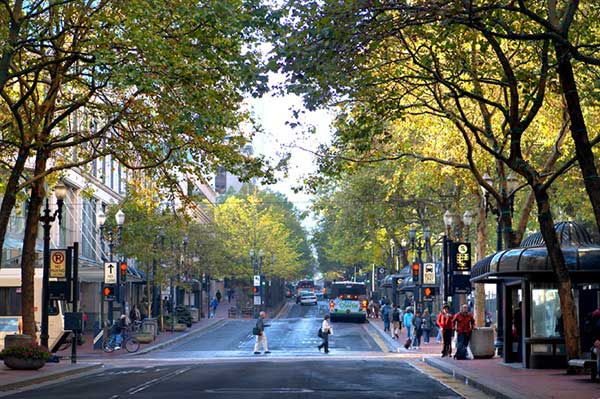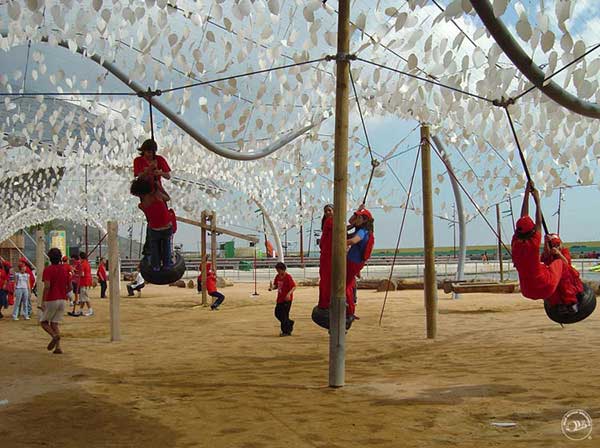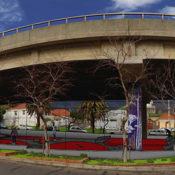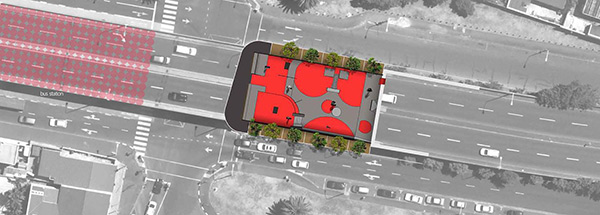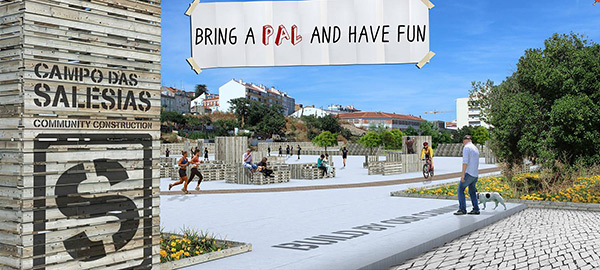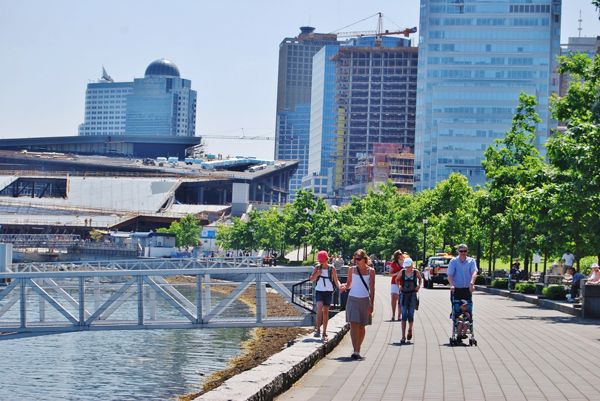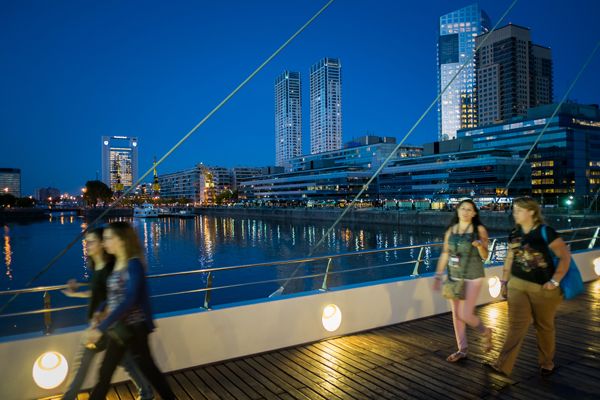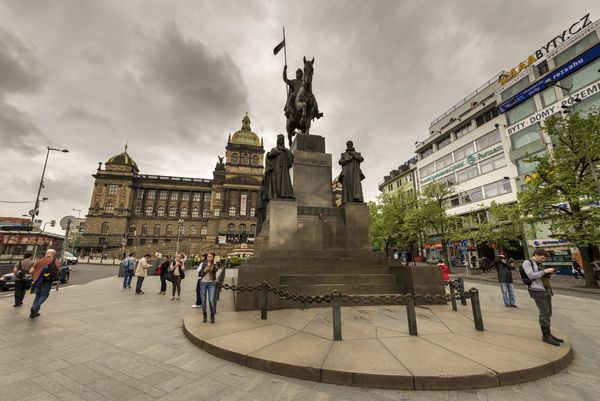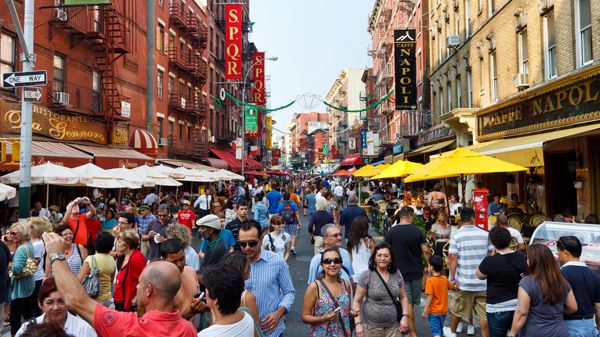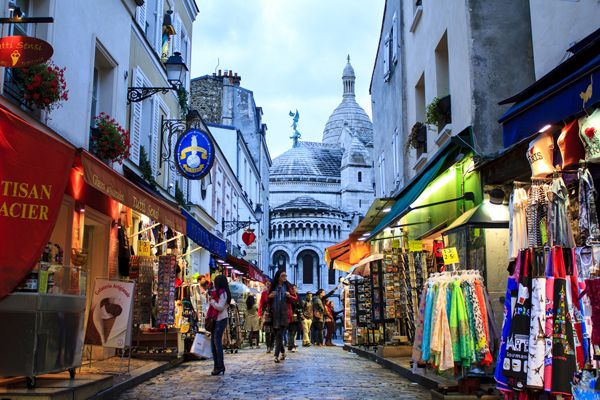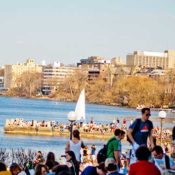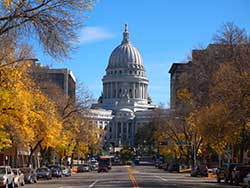Author: Lydia Major
A Recap of the ASLA 2013 Annual Meeting and EXPO
I arrived in Boston during the early morning hours of Friday, Nov. 15, hopped a cab to the hotel, and took a quick nap prior to the launch of the 2013 edition of the ASLA Annual Meeting & EXPO. I have attended this conference since 2009; each year has been more enjoyable than the last. This year was no exception. Upon entering the main entrance doors, I was greeted by a gigantic, widescreen Jumbotron happily scrolling ASLA Professional and Student Award winning projects from 2013. Crowds of conference goers waited in line to obtain their badges, and the anticipation grew. For first-timers, the initial experience can be daunting — it certainly was for me in 2009 — however, the best approach is to place your uneasiness aside and “dive in.”
A Few Tips When Attending
I’ve learned to sit near the front for the education sessions, to introduce myself to the presenter(s), to not be shy when I encounter a famous landscape architect, and to absorb as much content as possible, let it distill, and implement it into my practice.
Key Takeaways
If the nature of the education and field sessions is reflective of the pressing topics in landscape architecture, then there is no doubt public health ranks high on the list. Based on my count, 16 sessions presented topics about promoting healthy communities by way of active transportation, accessibility to local food, and opportunities for diverse public space amenities. Although this observation is a key concern in the United States, do similar topics hold true in other countries throughout the world? How has your country addressed public health? I’m curious to hear your thoughts.
Education Sessions That Resonated With Me
Throughout the conference, I attended a handful of education sessions. While I found them all to be beneficial, two in particular really hit home. Drawing: Lost & Found Presenters: Warren Byrd, Nelson Byrd Woltz Landscape Architects; Michael Vergason, Michael Vergason Landscape Architects; Laurie Olin, OLIN These three rock stars of landscape architecture presented work from their sketchbooks and distinctive, yet similar, approaches to why hand drawing is critical to the development of design. Perhaps the collective of big names drew a standing-room-only audience, yet I think with more schools shifting their focus to nearly entirely digital graphics, students and emerging professionals are realizing they must look to other avenues to bolster their hand-drawing skills. What better way to gain inspiration than from the masters!
Playing It Too Safe Presenters: Jane Chermayeff, Architecture Playground Equipment, Inc.; Philip Howard, Common Good; Harry Harbottle, and Julian Richter, Richter Spielgeräte GmbH First, I would like to praise this group of presenters for not resorting to a predictable PowerPoint presentation. Instead, they interjected professional experience and research into the mix, and Julian ultimately turned it into a passionate and entertaining sermon — one of my most memorable education sessions! Since half of the group was from Germany and the other half from the United States, the presentation provided a contrasting, yet agreeable, view of play — that it’s become too safe and, as a result, has stifled children’s interest in play. Julian Richter, the proprietor of Richter Spielgeräte GmbH, one of Germany’s largest play equipment manufacturers, noted that about 94 percent of injuries from play are due to a child’s actions, while only 6 percent of injuries are accredited to the equipment. This finding further demonstrates that by making play too safe, society is severely compromising the mental, physical, and social development of children — ultimately limiting children’s ability to assess risk.Why you should of went to ASLA 2013
For those who have attended the ASLA 2013 Annual Meeting & EXPO, this may be redundant to you, but the reason I continue to come back to this particular conference is simple: Great people, informative and compelling education sessions, and because it’s the best gathering of landscape architects in the world! While the years pass, I view this conference as a time to reconnect with old friends, fellow studio mates, and past professors, as well as a prime opportunity to create new friendships. Although licensed landscape architects view the Annual Meeting as an outlet to obtain more than 21 professional development hours (PDH) and maintain licensure, to me, it will always serve as a way to remain at the forefront of the industry. See you next year in Denver! Title: ASLA 2013 Annual Meeting & EXPO Dates: Nov. 15-18, 2013 Location: Boston, Massachusetts, USA Venue: Boston Convention and Exhibition Center Attendance: 5,700 (the second-largest in ASLA history) Future Annual Meetings: Denver, Nov. 21-24, 2014 (Colorado Convention Center); Chicago, Nov. 6-9, 2015 (McCormick Place) Article written by Brett Lezon.
And the Winner Is … PLAYscapes Design Competition Results
Back in April, we reported on the PLAYscapes Competition hosted by Building Trust International, which sought out creative proposals for underachieving sites. Over the course of the past five months, more than 500 registered entrants submitted designs to a diverse jury, including representatives from Building Trust International, Project for Public Spaces, BMW Guggenheim Lab, Landscape Architects Network, 3Space, Neon Stash, Land8, and academics and professionals from the fields of architecture and landscape design. Well, the wait is over — and the winning entries in the professional and student categories have been announced. The Winning Entry in the Professional Category A multidisciplinary team from the City of Cape Town has been announced as the Professional winner in the design competition that hopes to transform neglected or forgotten parts of cities into interactive playscapes. The design competition asked for a proposal that creates community involvement and turns a neglected space into a place for public interaction and creativity. This year’s Professional winner is Cape Town Gardens Skate Park (see image above). The project team consists of Gerrit Strydom, Lwandile Gcume, and Aline Cremon from the City of Cape Town; Errol van Amsterdam and Marvin Fester from C2C Consulting Engineers; with skate park design by Clive Crofton of Spyda Ramps. The team developed the design through lengthy consultation with local residents, skaters, and the national body, The National Skate Collective.
The jury selected the design as the competition winner because of its intelligent re-use of space, transforming an under-used and blighted underpass into a community-led skate park. The jury was also very impressed with the high level of involvement and consultation with local residents and the future users of the park. There were nine honorable mentions in the Professional category, located in sites ranging from Melbourne to London. The Winning Entry in the Student Category The winning entry from the Student category is “Bring a Pal and have fun” by a team from Lusiada University of Lisbon, Faculty of Architecture and Arts. Student team member Ricardo Morais said, “Initially, we decided to redevelop the space, building furniture equipment made with euro pallets, a material that is structurally sturdy, inexpensive, and easy to find anywhere in the world.” Comments from the Jury A wide range of submissions made use of sustainable materials and highlighted the need for everyone throughout the world to look at the forgotten parts of their cities and think about adaptive reuse and redevelopment of existing sites. The short-listed designs show a wide range of well-thought-out ideas for sites around the world where potentially problematic areas can become unique places celebrated by all of us. David Cole, founding partner of Building Trust International, said: “The competition was a huge success;, the winning project had an incredible level of thought and community involvement. The potential for this project to become a flagship in regenerating other areas in both Cape Town and other cities is exciting, and we look forward to helping realize the project over the coming months.”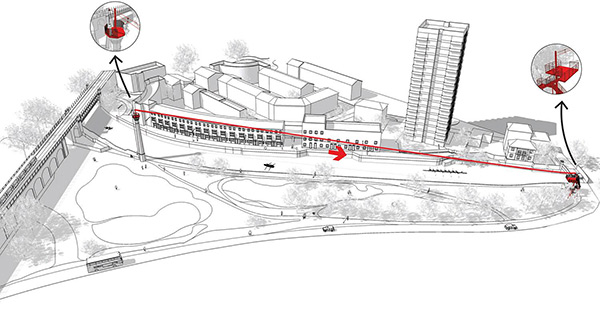
Honorable Mention Professional Category ‘Urban Zipline’ by Evegenia Batmanova, Katerina Sfyra, Giulio Bellizia & Dimitris Sparis, London
Top 10 Walkable Cities
Just as birds were built to fly, humans were built to walk. The former mayor of Bogotá, Colombia, Enrique Peñalosa, said it best. He stated, “God made us walking animals, pedestrians. As a fish needs to swim, a bird to fly, a deer to run, we need to walk, not in order to survive, but to be happy.” However, this concept does not hold true everywhere. Take for instance auto-centric cities such as Houston and Jakarta. As Jan Gehl, Danish architect and urban designer, believes, cities are meant for people, not cars. Since summer is in full swing for a majority of the world, why not plan a trip with walkability in mind? Before booking, have a look at our most walkable destinations! 10. Boston, Massachusetts
As one of the oldest cities in the United States, it’s no surprise that Boston ranks as one of the most walkable cities. Whether you’re a history buff or just adventurous, take the 2.5-mile Freedom Trail, which leads to 16 historic sites. Perhaps you want a view? Walk along Harborwalk, where you’ll discover public art, parks, and cafes. The Beacon Hill neighborhood is also a top spot for walking, as it is along the Freedom Trail. 9. Sydney, Australia Sydney has gorgeous weather for most of the year, making it a reasonable feat to cover on foot. Start at the Rocks on the edge of the city center, then proceed to Circular Quay and the Royal Botanic Gardens. Throughout, soak in the famous sights such as the Opera House and the Harbor Bridge. If you’re curious about the beaches, begin at Bondi Beach and walk two miles to Bronte, where you’ll be immersed amidst cliffs that line the Pacific Ocean. Stop at Manly or Tamarama Beach to partake in the art of people-watching. 8. Vancouver, British Columbia Vancouver is a dense, compact city, featuring a great public transportation network and a comprehensive system for pedestrians and bicyclists. Take a stroll on the beautiful False Creek shoreline promenade to Granville Island and enjoy the public market, shops, and cafes. Stanley Park, an expansive urban park bordering downtown Vancouver, presents stellar views, inner city beaches, public art, and other natural amenities. 7. Buenos Aires, Argentina As you travel from the airport, Buenos Aires seems like a sprawling metropolis over the eastern plains of Argentina. However, there’s no need to worry, as the central city is well devised for walking. As you walk, it’s hard to miss presidential palaces and grand churches, spontaneous tango sessions, and commerce. Yet the neighborhoods of Buenos Aires cater to all, especially on a Sunday in San Telmo, which features a lively, bohemian market comprised of shops, street performers, and artists. If you’re in the mood for something more elegant, be sure to explore Palermo, an all cobble area with tree-lined streets, bursting with boutiques and restaurants. 6. Prague, Czech Republic Explore the Royal Route, which got its name from the coronation processions of the Bohemian kings. Begin your trek at Prasna Brana, part of the original gates of the old city, and follow the silver arrows on the sidewalks along Celetná Street. Throughout this journey, take in the wonders of the House of the Black Madonna, the first cubist building in Europe. Follow this path to Old Town Square to experience the Astronomical clock. 5. Budapest, Hungary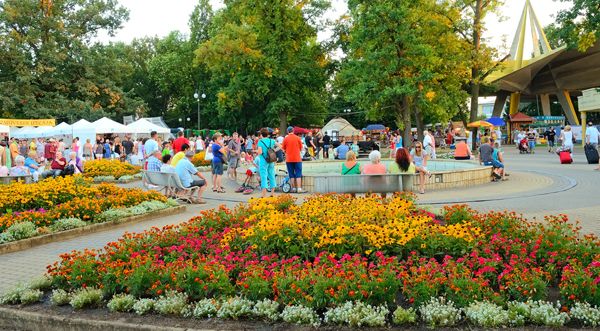 Budapest; credit: Tatiana Volgutova / shutterstock.com
Budapest; credit: Tatiana Volgutova / shutterstock.com
The Danube River bisects the city, and both sides present an abundance of walking opportunities centered on history. Begin at Heroes’ Square, which features lavish monuments. Then venture to Andrassy Avenue and make sure to stop at the baroque Széchenyi baths to engage in the city’s bathing culture. At night, take a pub crawl and visit the city’s “ruin pubs” such as Ötkert or Szimpla Kert, where you will discover how the Hungarians party. 4. Barcelona, Spain
La Rambla, an expansive tree-lined pedestrian mall, sits at the heart of Barcelona. Here you will discover shops, street performers, vendors, and restaurants, making it a memorable place to walk. Walk along the Barcelona harbor pedestrian area and continue until you reach the Plaça de Catalunya, the city’s central square. Seeking historic architecture? Check out Gothic Quarter, which features 15th-century churches and plazas. 3. London, United Kingdom London is a collection of interesting neighborhoods, and it offers a plethora of attractive walks, including the Jubilee Walkway, London Loop, and Thames Path. Several companies offer guided tours that cover topics such as architecture, historic events, and ghosts. Often overlooked, the Regent district of London is a perfect location to walk, as it is situated along London’s inner canal system. With a comprehensive network of parks, historical attractions, and natural amenities, London is a walker’s dream. 2. New York City, New York Take a stroll during rush hour on a weekday afternoon and you will spot fashionably dressed men and women sporting athletic shoes. New York is a walker’s paradise, and with gridded streets, which are clearly numbered, don’t worry about getting lost. Instead of establishing a set route, experience the city’s offerings through its distinct neighborhoods. The list of human-scaled neighborhoods best enjoyed by walking is lengthy, yet some of the best include: Village, Chelsea, SoHo, Upper West Side, East Village, and (how could you forget) Central Park! Expect to cover about 20 north-south blocks per mile at a moderate pace. 1. Paris, France Packed with tree-lined streets, cobblestone side streets, sidewalk cafes, promenades along the Seine, and lanes blocked off to cars, Paris is an exhilarating city to experience by foot. An entire book can be written about walking in Paris, and it has already been done. So, instead, I will highlight a few key destinations. A favorite walking route is from Sacré-Coeur Basilica through Montmatre, where you will experience a weekend artists’ and produce market. If you are interested in palaces, gardens, and historic buildings, walk along the Right Bank of the Seine River, detouring slightly to absorb the Champs-Élysees and Place de la Concorde. However, I would recommend simply exploring, because intriguing experiences can be found throughout the city. Although there are many walkable cities, I had to narrow it down to 10. Whether you’re an urbanist or a person interested in car-optional destinations, this list highlights exemplary locations where pedestrians flourish. While not all cities are walkable, if you do live in a walkable environment and are uncertain of the value of walkability, I urge you to ditch your car for a month and discover the rewards, such as more discretionary income, less stress, and greater social interaction. Article written by Brett Lezon Featured image: Lissandra Melo / shutterstock.comLABash: An Interview with the 2014 Host, UW-Madison
Are you a design or planning student seeking to attend a dynamic conference, but don’t know where to begin? Look no further – LABash is the quintessential adventure! Having attended three times in my undergraduate years I assure you that it’s a rewarding experience. Still uncertain? That is fair, but why would you miss three invigorating, fun-filled days of guest speakers, workshops, design charrettes, expos, and did I mention social events! I had the pleasure of interviewing the LABash 2014 Committee Chair, Jake Wievel, and it appears that next year’s attendees are in store for a treat at the University of Wisconsin-Madison.
- When did LABash originate, can you speak about its history?
LABash began as a student run conference founded by three landscape architecture students from the University of Guelph in Ontario, Canada in 1970. After the inaugural year, the conference rotated to different schools with landscape architecture programs across Canada and the United States. The popularity has markedly grown in the last five years as attendance from past conferences ranged from 200 to 700 students, professionals, speakers, and exhibitors.
- What is the premise of LABash? What kind of events can an attendee expect?
LABash is a great networking tool for students, allowing them the opportunity to cultivate relationships with a tight knit group of professionals within the field.
It is comprised of speakers, workshops, charrettes, and social events. LABash offers a range of events depending on the host school’s program and location. For instance, Florida International University hosted LABash 2012 and organized a bike tour to showcase South Beach Miami. This year, the University of Georgia offered a design build charrette, which allowed students to participate in the design and construction of specific site elements. We’re really looking forward to presenting Madison’s unique culture.- Why should students attend this event?
It’s a chance to get to know other students in the profession and it opens windows of opportunity. LABash exposes students to the many different facets of landscape architecture, while merging into diverse, related fields. Also, it’s a relaxed atmosphere and allows students to get an idea of where they fit in the profession. Being able to see work from students in other programs can be very helpful and it allows a chance for collaboration that is invaluable.
- What can attendees anticipate from LABash 2014 at the University of Wisconsin-Madison? Give us a sneak peak.
We plan to explore our heritage as an environmental school and highlight the work of our alumni, especially within the field of landscape architecture. Attendees can expect to gain insight into sustainability and ecological restoration work that is being done in Madison, as well as what it means to be a student in Madison. Additionally, LABash 2014 will celebrate Madison’s location as an urban center immersed within a great variety of natural areas. We encourage those interested in attending to explore Madison online to get a better perspective of the city. Students can expect an event that takes full advantage of Madison’s student life, and of course a wonderful variety of food and beverages. We will be providing more details on our website in the coming months and are really excited to show everyone a great time in 2014.
- What motivated the University of Wisconsin-Madison to bid to host LABash 2014? How did you win the bid?
The seniors attended LABash a few years ago and showed us pictures, and we as younger students got excited to attend LABash in 2012 at Florida International University. Prior to departing we assembled a video to bid for LABash 2014. Surprisingly, we were the only school to submit a bid, so we won by default, yet everyone was excited. In addition, we wanted to celebrate the students, professors, and alumni that encompass our program and felt what better opportunity than to host LABash. Whether you’re a student based in North America, Europe, or Asia, if you have the opportunity to attend LABash I urge you to take full advantage. This student run conference is a magical experience that has been instilling students with inspiration for over 40 years! Trust me, once you do attend you’ll understand. Interview conducted by Brett Lezon Website: www.labash2014.com Dates: March 27-29, 2014 Location: University of Wisconsin-Madison Enjoy what you’ve read! Support us and pick up one of our awesome T-shirts and hoodies today, Click the link
- 1
- 2



